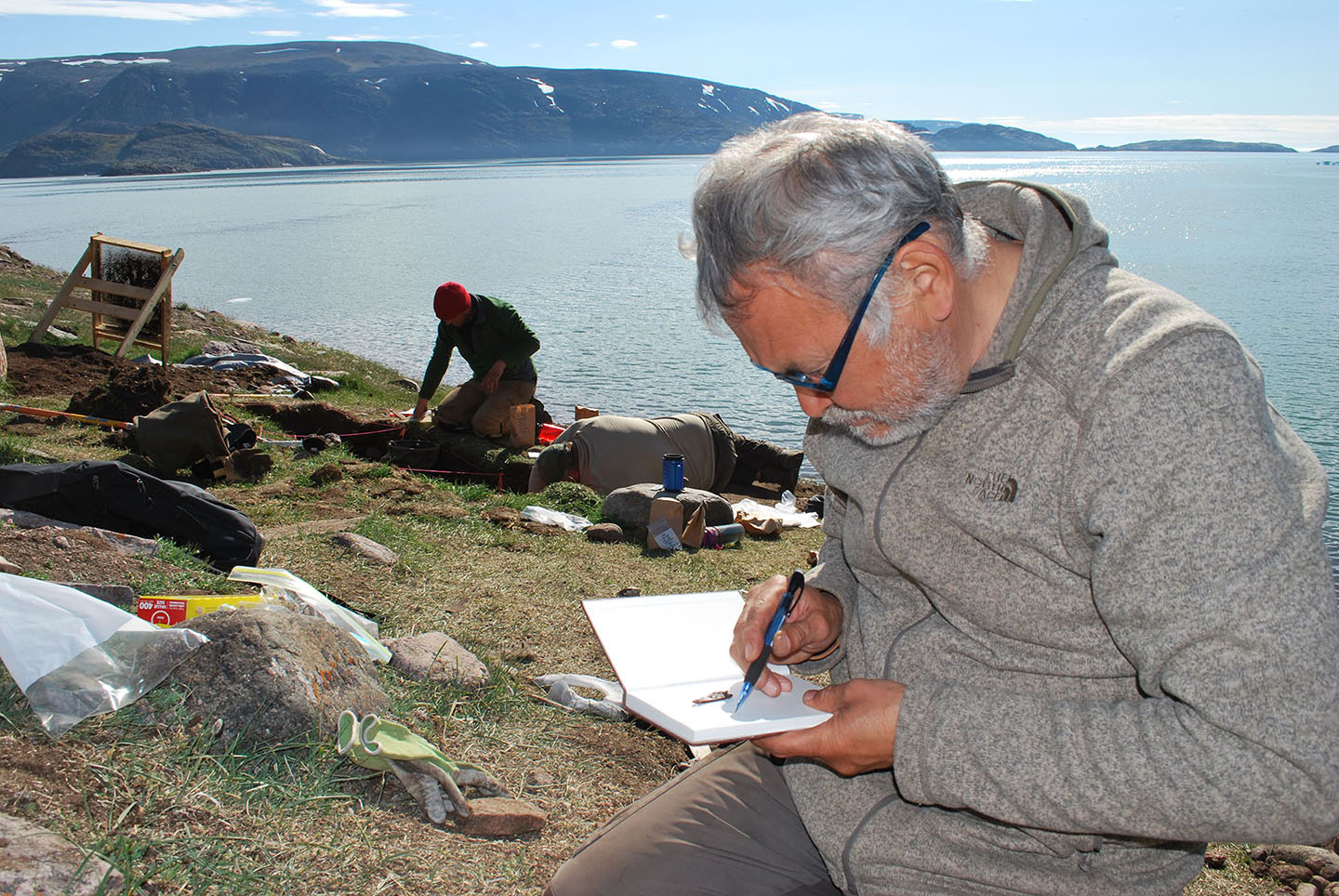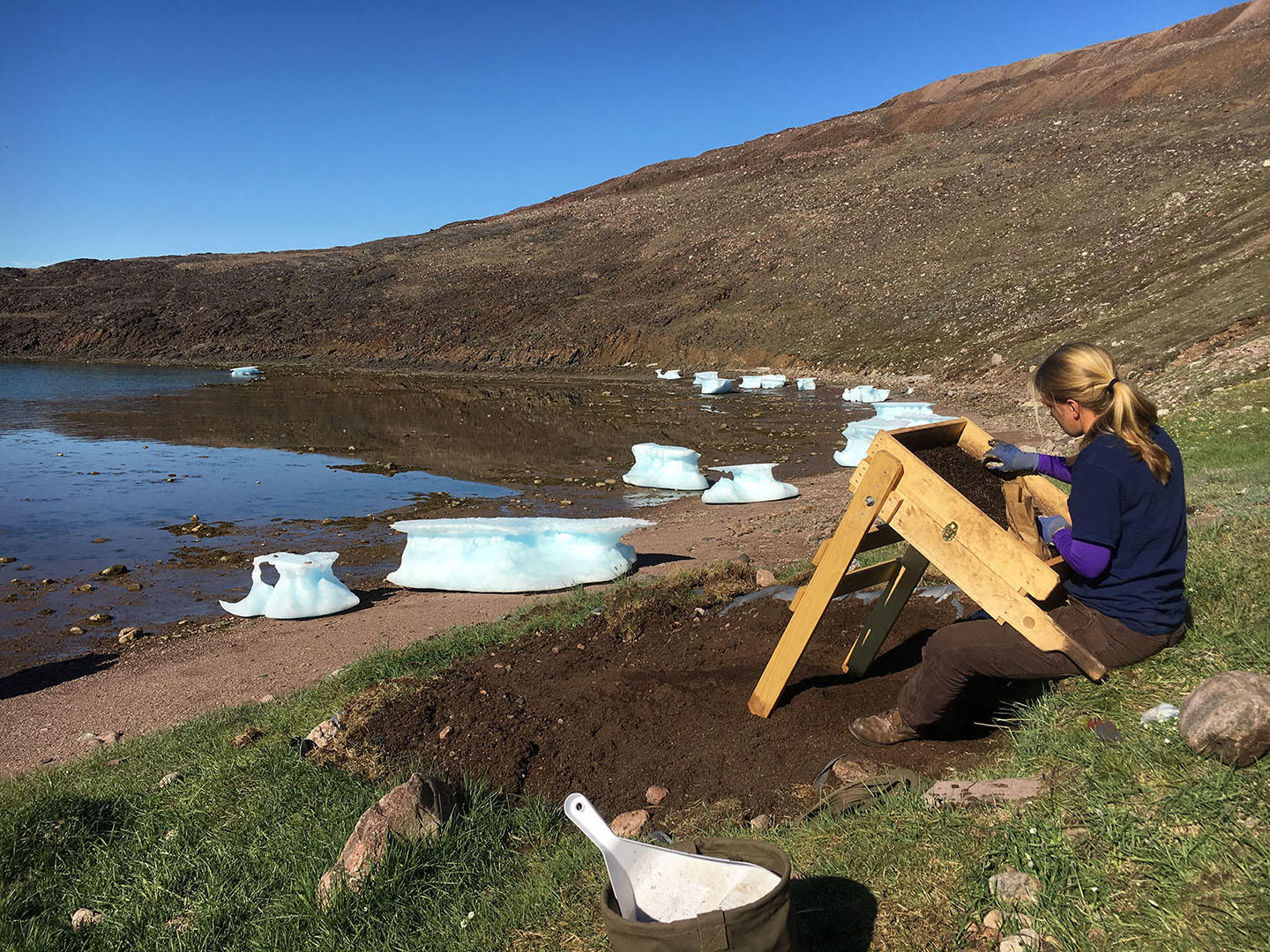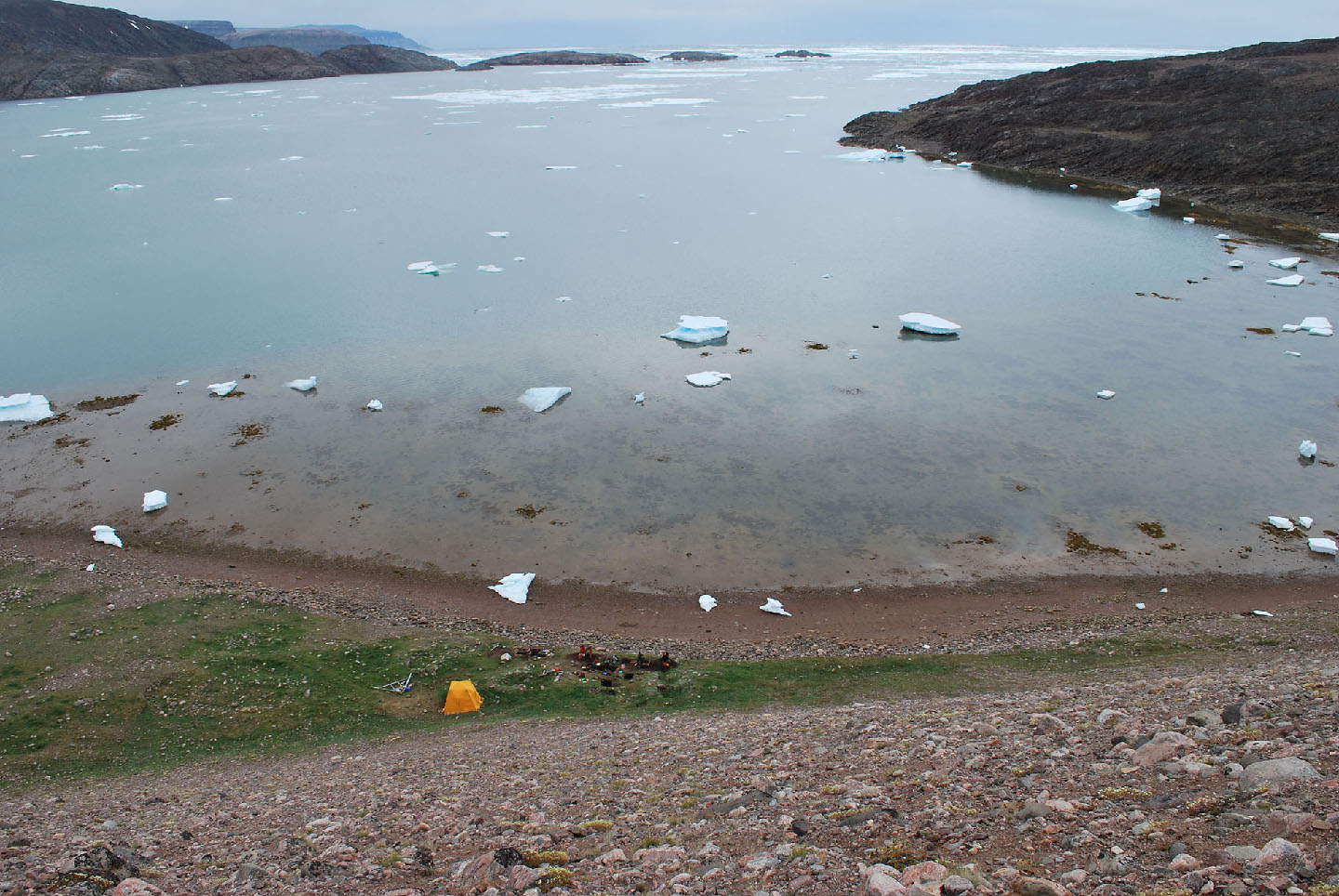Endangered Archaeology at Iita
In 2016 Curator Genevieve LeMoine, along with University of California, Davis Researcher John Darwent and Greenland National Museum and Archives Curator Hans Lange, returned to the site to investigate the earliest cultural deposits at the site before they are lost.
Iita (formerly spelled Etah), is best known in the English-speaking world for its place in the history of Arctic exploration. Explorers from Elisha Kent Kane to Robert E. Peary visited and even based themselves there, and wrote about it in their popular books. Such was Iita’s fame that it still sometimes appears on maps, although it has been abandoned for more than half a century.
Explorers were drawn to Iita because they knew they would find people there. Iita was an important Inughuit settlement in both winter and summer, with excellent access to a variety of important resources, from walrus to little auks. Our initial research, part of the Inglefield Land Archaeology Project [link], focused on the historic occupation at the site but also revealed that there were much earlier occupations going back about 1000 years. In a subsequent visit in 2012 to learn more about these early deposits, John Darwent and Hans Lange determined that there had been considerable erosion at the site, which was at risk of being completely lost. In the summer of 2016 we returned to the site, accompanied by students Jason Miszaniec (UCD), Lara Bluhm (Bowdoin), and Nuka Larsen (Ilisimatusarfik/University of Greenland), to excavate these earlier levels.
The excavation results were exactly what we had hoped for. Beneath deposits left by historic Inughuit and their direct ancestors over the last 800 years were thin distinct layers left by people known to archaeologists as the Dorset people who had lived at the site from at least 1000 AD to about 1200 AD. The finds included knife blades made from meteoric iron collected about 200 miles south of Iita, fine ivory carvings, stone tools, and bones from the animals Dorset families hunted and ate. We are still analyzing these finds and hope to learn more about how these people used this landscape and how their lives might have differed from those of the ancestral Inughuit who lived at Iita after them. How did two different but related groups of people, with different technologies, adapt to the same environment?
You can read more about our fieldwork in the article “A Race to Save the Artifacts.” We also contributed to the blog A Glimmer on the Polar Sea.
This project was funded by the National Science Foundation, Office of Polar Programs grant 1623802.




